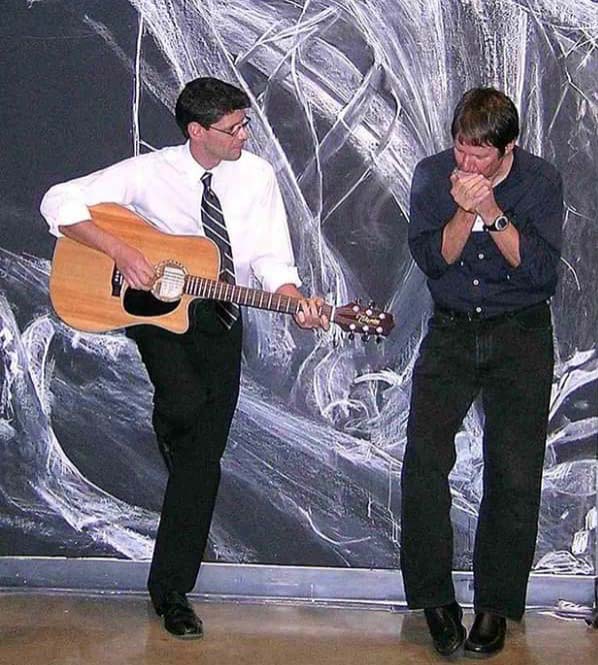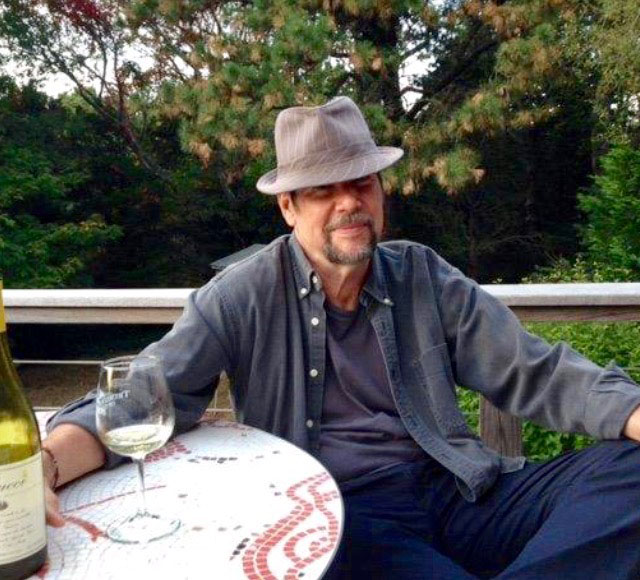In Memoriam: Former Professor Kermit Moyer 1943-2024

On March 8, 2024, award-winning writer and former American University faculty member Kermit Wonders Moyer, died. His obituary was written by poet and professor David Keplinger. He shares it here:
On March 8, 2024, beloved husband, writer, and professor, Kermit Wonders Moyer, died. After nearly four decades of teaching at American University, he and his wife Amy Gussack retired to Eastham, Cape Cod where they spent the last seventeen years. Kermit’s early life was one of movement and change. Born August 3, 1943, he was the son of a career military father who took him and his family to outposts that included Texas, Georgia, Pennsylvania, and Okinawa, Japan, all of which would appear as settings in Kermit’s last book, The Chester Chronicles (The Permanent Press, 2010).
During his early years, Kermit’s home-away-from-home was a hundred year old cabin in Caledonia State Park in the Pennsylvania woods, where he and his cousins would gather in the summertime, offering the young writer an environment of community and the natural world that would years later return in his short stories and even poetry, an eternal realm of childhood like the swashbuckling of Neverland in Peter Pan, a tale he wrote about and deeply admired for its psychological and mythical landscapes, which described the mysteries of Kermit’s main subject matter, childhood and the burgeoning of young adulthood.
At eighteen Kermit left for Chicago, where he attended Northwestern University, majoring in English and studying with Stephen Spender and other influences in that prestigious institution where he earned his PhD, writing his dissertation on themes from Otto Spengler found within F. Scott Fitzgerald’s The Great Gatsby. That manuscript was eventually published later as A Child of the Last Days.
 "Knockin' on Heaven's Door," Kermit (right) and Dave Keplinger at 30th Anniversary Party of AU's MFA Program in Creative Writing, 2010
"Knockin' on Heaven's Door," Kermit (right) and Dave Keplinger at 30th Anniversary Party of AU's MFA Program in Creative Writing, 2010
More than his critical work, which demanded so much of his attention in the early part of his academic career, it was Kermit’s coming to creative writing that shaped his inner life, beginning a few short years after his arrival at American University as an Assistant Professor in 1970. That was also the year he met his beloved Amy (Gussack), who became his wife. Over the next 37 years, from his office in their house which they called Homewood, in the woods of Washington Grove, MD, Kermit wrote and published stories regularly for The Hudson Review, as well as in The Sewanee Review, Northeast Corridor, and The Southern Review. The Georgia Review published his first story, “Compass of the Heart.” The early stories led to the compilation of his first collection, Tumbling (University of Illinois, 1988), which was hailed by The New York Times as “a work of ringing authenticity.” The Chester Chronicles followed, typical of Kermit’s careful and meticulous sculpting of each sentence, twenty years later. It was worth the long wait. The novel-in-stories won the L.L. Winship/Pen New England Award, which Moyer was presented with at the JFK Presidential Library in Boston in 2011. The judge’s citation read, “the book is a triumph of exact detail, and Moyer is a writer to conjure with."
Kermit was an exquisite teacher of texts and creative writing at American University, during decades in which he also served as Department Chair of Literature and Director of the MFA program. He was a regular guest on the nationally syndicated Diane Rehm Show, where, completely extemporaneously, he could recount the plots to novels and discuss their finer points with a panel of other teachers and specialists. His students at the university praised him for his erudition, high standards, honesty, and his joy for their accomplishments large and small. Many of his students went on to publish novels and poetry of their own; these books were stacked just above his writing desk in the place of honor. Kermit loved what E.L. Doctorow said about craft, which he summarized in an interview: “Writing a book is like driving a car at night. You can only see as far as the headlights go, but you can make the whole trip that way.” He applied the same care and patience to his students’ work as he did to his own. His models were teacher-scholars like Frank Conroy and William Stafford.
 Kermit and wife Amy
Kermit and wife Amy
With Amy, Kermit traveled extensively, returning to Japan and also visiting Italy several times. Always at home just where he was at, Kermit’s life was illuminated by a very strong feeling of acceptance and presence that is often attributed to lifelong meditators or prayerful people. As he did in his writing, Kermit simply took care in his life and glimpsed only as far as the headlight shone, and he traveled the whole journey that way. Writing on his experience with Parkinson’s Disease, Kermit’s 2010 article in The Washingtonian, “A Stranger to Himself,” describes the disabling effect of the disease while showing the mental removal he experienced from the body. Even as Parkinson’s took hold, he continued—some thirty years after his diagnosis—to offer readings and travel, even spending three springtimes in Key West until 2020, a presence at the gym and in the restaurants and bars in town. Kermit was a lover of jazz piano, Keith Jarrett especially, and singer songwriters like Josh Ritter, whom he brought to American University to perform and engage with his students. He learned to play the harmonica later in life and performed at home, at parties, and once, he played in a presentation of Bob Dylan’s music at the Strathmore near Washington, D.C. His outer world matched the textures and joys of his inner worlds. He would often say, “I’ve played the game of Life and won.”

Kermit is survived by his devoted wife of 52 years, Amy Gussack, as well as his sister, Candy Carter, niece Leslee Brackin and her husband John, their children Jack and AnnaGrace, as well as the Gussack family: sisters Lisa Gussack, Nina Gussack, Faith Gussack, brother David Gussack, as well as nieces and nephews Adam, Jonathan, Becca, Daniel, Benjamin, Asher, and Natasha. His circle of friends—David Keplinger, Bobbi Whalen, Jim Youngerman, Jane Goodrich, Soyoko Higaki, George Lehner, Dave Singleton, Dori Sless, David Sless, and many more—was rich; he considered many his own family, whether by blood or close bond. Kermit was, as Raymond Carver’s poem, “Late Fragment,” describes, “beloved on this earth.”
In lieu of flowers or donations, we ask that you read something of Kermit’s critical or creative work or listen to one of his sessions on Diane Rehm. This material is available at one source: www.kermitmoyer.net.
